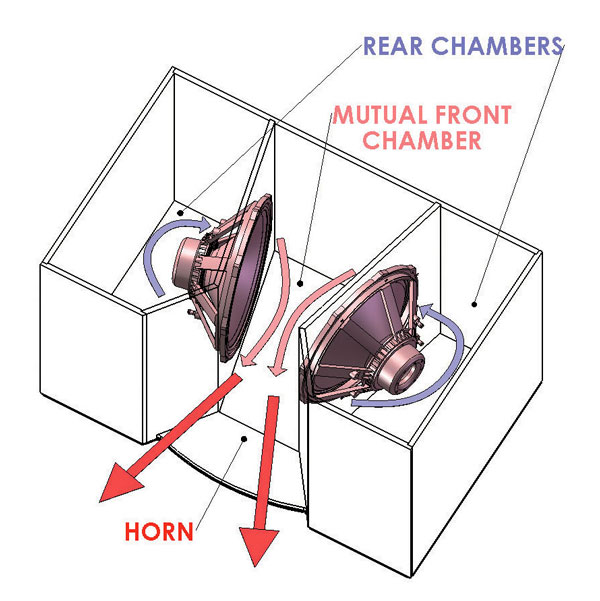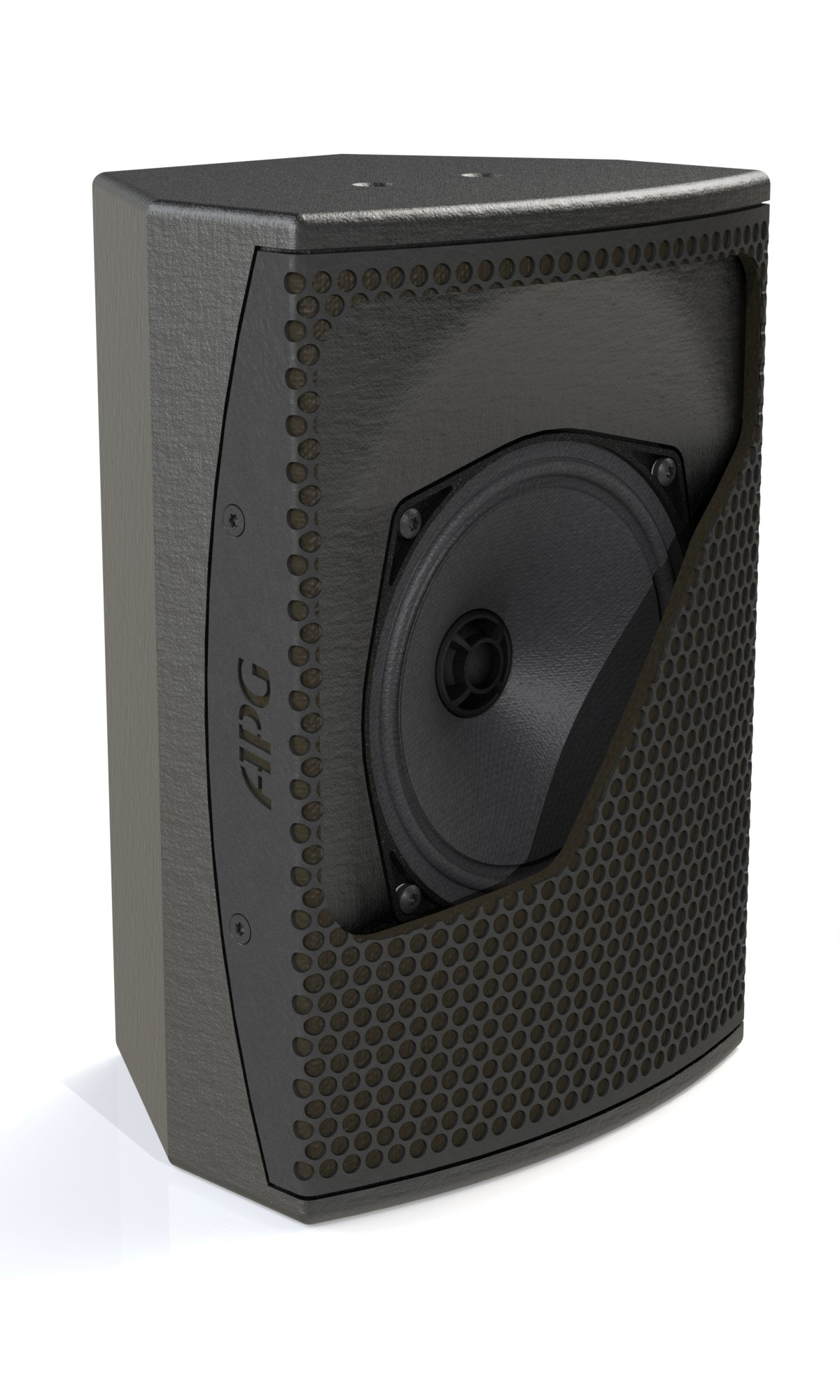
All APG ranges are based on several innovative technologies in which APG has become a specialist over time: the coaxial Isotop™ concept and D'Appolito principle, K-Horn and dual interactive chamber.
Coaxial Technology
Coaxial technology consists of two or more loudspeakers on the same axis, which results in linearity for both amplitude and phase curves and in a perfectly consistency acoustic field even in near field listening.
 |
Benefits:
|
APG has developed a unique know-how in the optimisation of this technology which has been implemented directly in the coaxial speakers (Micro Axial, SMX and Dispersion Series) and in the development of the Isotop™ driver, APG’s proprietary compression driver.
Isotop™ Technology
Isotop™ technology comprises a 6.5" cone driver / 1" HF driver which generates a constant phase wavefront.
The Isotop™ driver enables:
- generation of an isophase wavefront
- a continuous 300 Hz to 19 KHz bandwidth
- highly superior SPL capability
- much lower distortion than traditional compression drivers
 |
Benefits:
|
The Isotop™ technology equips all FOH systems in Matrix Array, UNILINE, Beam Series & Sector Series.
The D'Appolito Baffle
The D’Appolito baffle enables directivity control without the use of a horn.
The directivity is controlled lower down in the frequency range while limiting the distortion and the diffractions caused by a physical horn. Furthermore, the close coupling of the two transducers affords a significant gain in efficiency.
 |
Benefits:
- 100 dB @ 1W / 1m efficiency - Intelligibility in reverberant sites |
The D’Appolito principle is implemented in the MC2 loudspeakers, Matrix Array systems and the Uniline system.
K-Horn Technology
K-Horn technology is a complex acoustic load designed for subwoofers and low frequency speakers.
It consists of loading a double interactive chamber with a K-horn. This exclusive technology provides a significant increase in gain, between 4 and 6 dB, compared to the conventional bass reflex load and direct
radiation.
 |
Benefits:
|
This technology has been designed for the new generation "TB" subwoofer family.
Dual Interactive Chamber Technology
The concept of the dual interactive chamber is to make the two cavities of a symmetrical load interact with each other.
The dual interactive chamber concept allows considerable volume reduction in the load, resulting in impressive compactness. Benefits :
Benefits :
• Efficiency : + 3dB
• Limitated cone displacement
=> increased reliability
• Dual interactive chamber
=> Compactness
No Diffraction Baffle (APG NDB)
Harmoniously extending the coaxial transducer, the anti-diffraction 'APG NDB' baffle allows a perfect adaptation of the enclosure to its environment.
 |
Benefits :
|
The combination of coaxial technology and an anti-diffraction baffle allows perfect positioning of the sound in space, homogeneous coverage and the absence of distortion.
